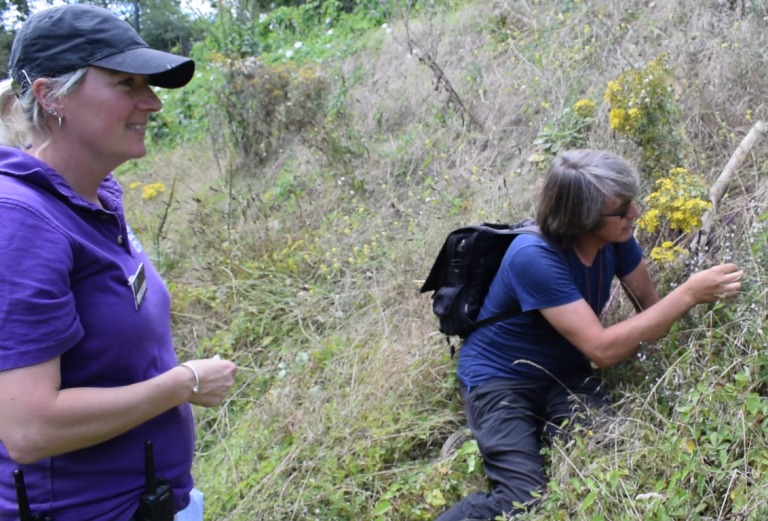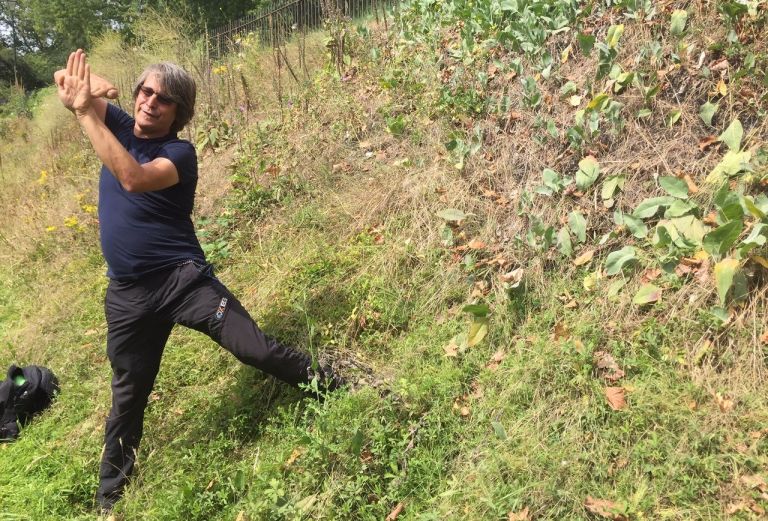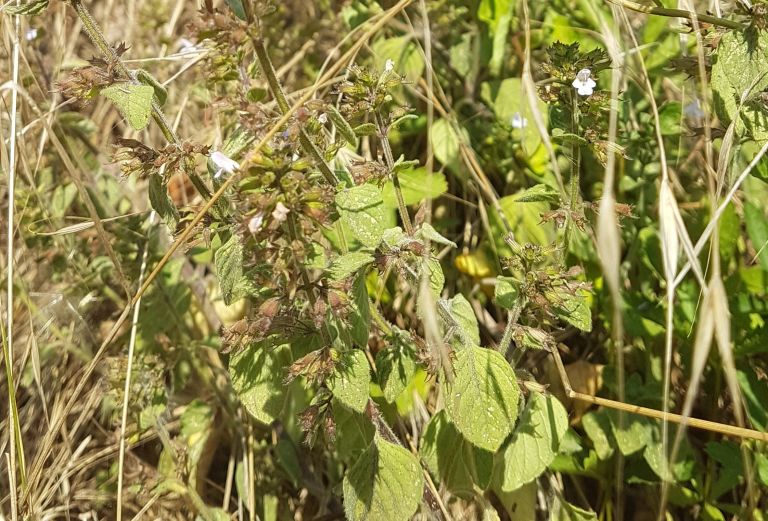
Annette Förger, garden apprentice
Having just started my position as garden apprentice at Fulham Palace, I couldn’t have wished for a more exciting first week – I was thrilled to be able to take a closer look at one of the most fascinating areas in the garden when renowned botanist and author Dr Mark Spencer came in to do a plant species survey of the moat at the front of the Palace. In the context of Fulham Palace’s plans to develop a proper biodiversity policy, Mark is advising on our biodiversity policy and how we can maximise what we have. Head gardener Lucy Hart wanted him to take a closer look at the plant communities now thriving in our moat, and the garden apprentices were lucky to spend an entire morning with Mark to observe his work and learn about the principles of conducting a habitat survey.

We were really surprised about the wide range of plants growing happily alongside each other in the moat. We started out by looking at creeping thistles (Cirsium arvense), a plant native to Britain, which forms several small colonies within the moat. Mark explained that the thistles are not only an important plant for bees, but support a huge range of birds, butterflies, moths and other organisms. Equipped with hand lenses, we were able to take a closer look at the intricate structure of the feathery pappus, the “fluffy stuff” which aids the dispersal of seeds.

Another interesting plant that has colonised a part of the moat is the broad-leaved Lepidium latifolium in the Brassica family. This edible, perennial plant with the common name dittander or dittany was widely used as a flavouring ingredient similar to horseradish already in Roman times. Dittander has sprung up in the moat without being sown or planted, and Mark explained it’s quite possible that there has been a dormant seed bank in the ground for hundreds of years, and the plant saw its chance when the moat was excavated – and so dittander is finally back at Fulham Palace.
Mark was also very pleased to see a lot of wild mullein (Verbascum nigrum) with its distinctive flower spikes dotted through the moat. This plant has been very rare in London for many years and apparently only five sites with a permanent population exist in London north of the Thames!

Naturally, as gardeners we couldn’t help but cast a worried glance on the area of bindweed (Calystegia sylvatica) which has colonised a small area in the moat, and is of course notorious for being a very persistent weed. Mark explained that a lot of the soil in London has very high nutrient levels, which encourages nitrophile plants such as bindweed or nettles. In order to encourage a real mix of species in the moat area, and avoid the nitrophiles taking over, it is crucial to implement a regular cutting regime and then remove the cuttings, to keep the nutrient levels low and give the more delicate plant species a chance.
We looked at many other plant species, but my top plant to discover was probably Clinopodium ascendens, the common calamint. This is a lovely, delicate plant with aromatic leaves and small purple flowers and according to Mark it is quite rare. Mark commented the fact that this plant has appeared at Fulham Palace is a clear sign that things are going in the right direction. This indicates the management of the moat has been ideal in developing the area into a more diverse habitat in which many species of plants and animals can thrive alongside each other.
